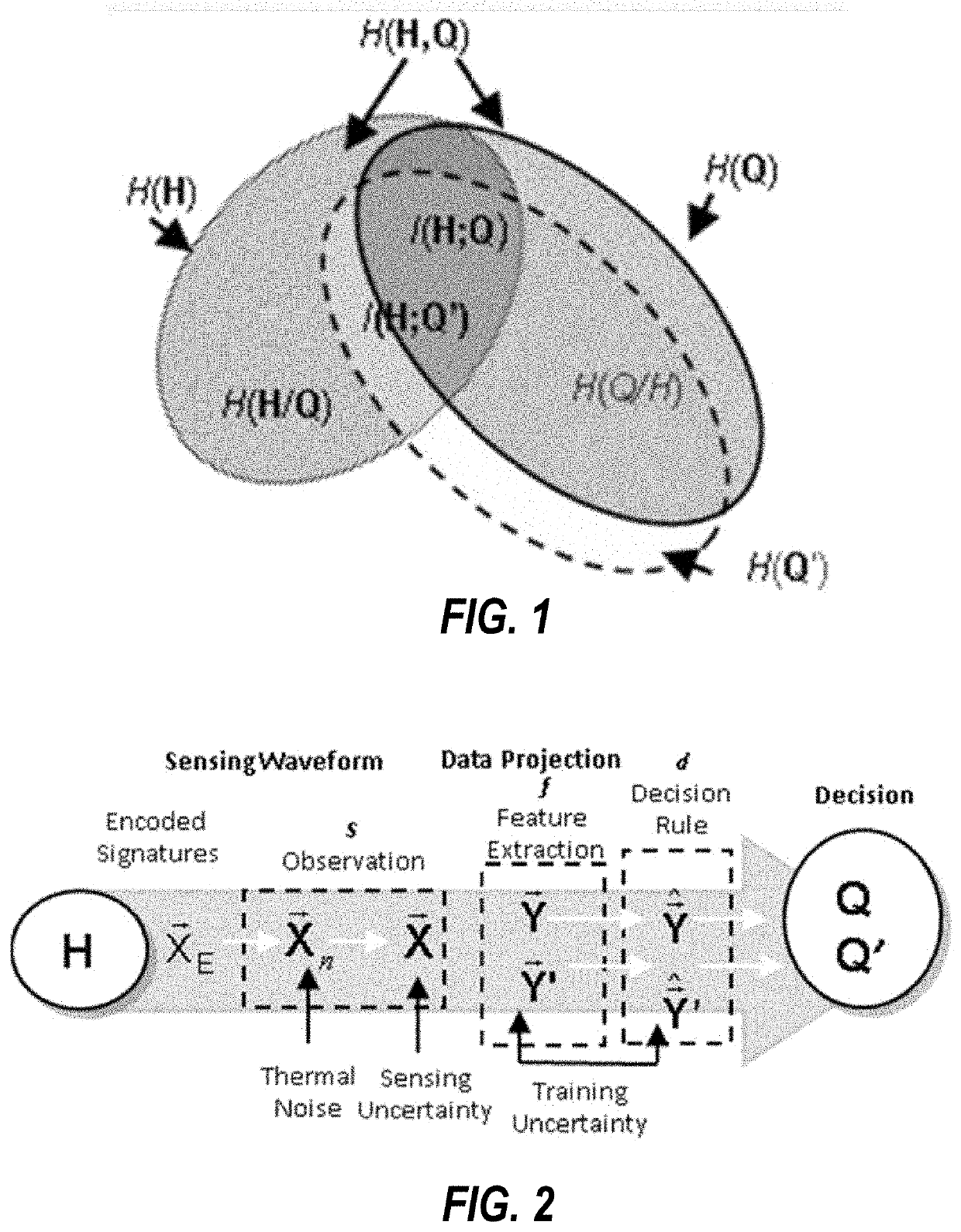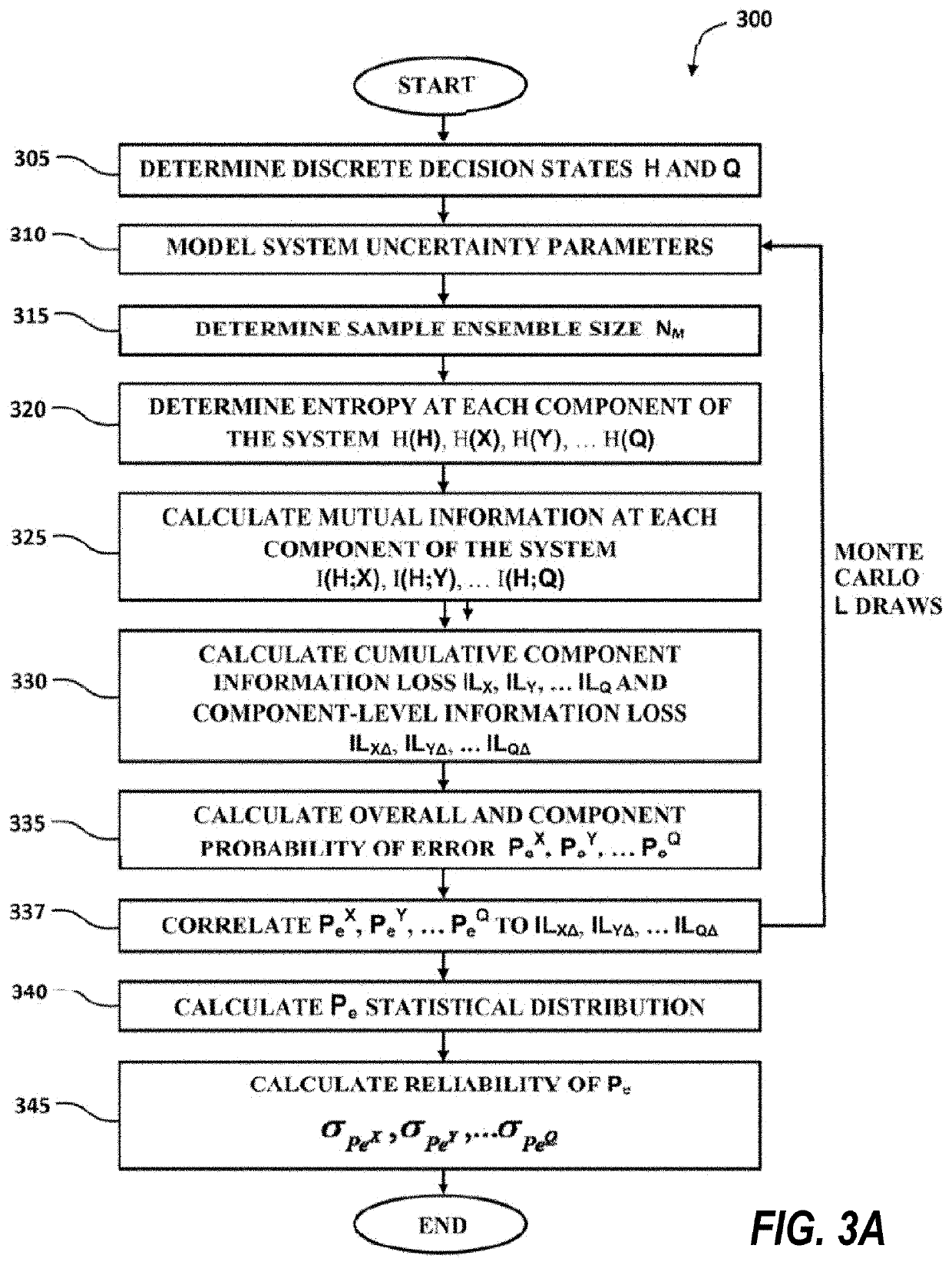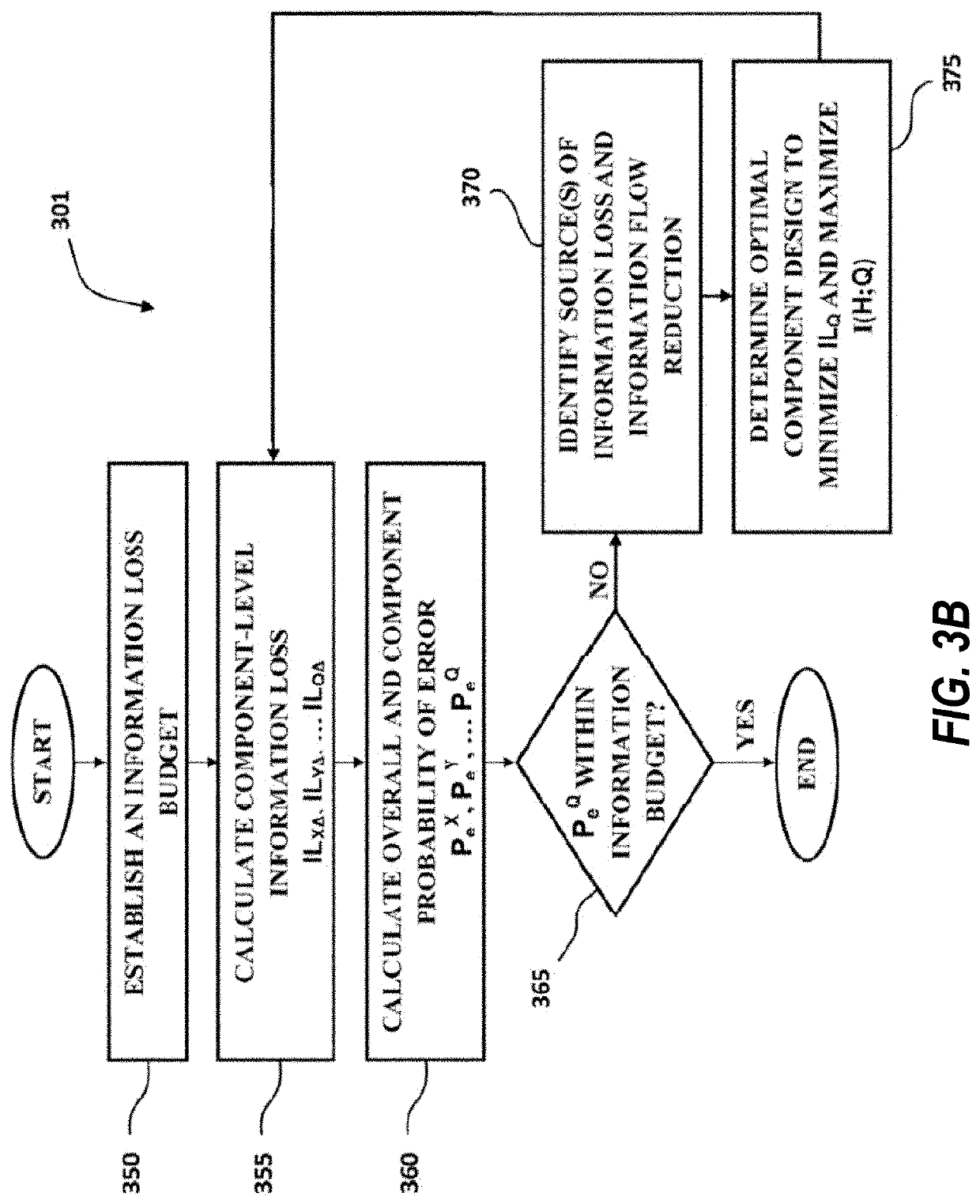Fano-Based Information Theoretic Method (FBIT) for Design and Optimization of Nonlinear Systems
a nonlinear system and information theoretic method technology, applied in the field of information theory, can solve the problems of low degree of detail of existing system theory prototypes, high cost of end product, and low interest in system parameters
- Summary
- Abstract
- Description
- Claims
- Application Information
AI Technical Summary
Benefits of technology
Problems solved by technology
Method used
Image
Examples
case 1
[0177 of Table 5 represents an observed process {right arrow over (X)}n of a stationary object of known aspect angle with perfect training. Case 1 conditions correspond to the highest certainty state possible. Case 2 corresponds to the observed process {right arrow over (X)} of an object that is moving slow enough as to appear stationary during the measurement interval. The aspect estimation is σt=0.75 degrees with an unknown bias (μt), and again the training is perfect. Case 3 conditions are similar with an unknown leading edge position bias μr.
[0178]The signal-to-noise ratio (SNR) parameter is treated as an unknown parameter in Case 4. Case 5 is a combined condition of the unknown parameters in Cases 2, 3, and 4. In case 6, a form of imperfect training is presented where the measurement parameter uncertainty provided in Case 5 is combined with training level B (μr=0 and μt=0).
[0179]Sampling and FBIT Analysis: The amplitude response for the N sample ensemble of HRR signatures for a...
PUM
 Login to View More
Login to View More Abstract
Description
Claims
Application Information
 Login to View More
Login to View More - R&D
- Intellectual Property
- Life Sciences
- Materials
- Tech Scout
- Unparalleled Data Quality
- Higher Quality Content
- 60% Fewer Hallucinations
Browse by: Latest US Patents, China's latest patents, Technical Efficacy Thesaurus, Application Domain, Technology Topic, Popular Technical Reports.
© 2025 PatSnap. All rights reserved.Legal|Privacy policy|Modern Slavery Act Transparency Statement|Sitemap|About US| Contact US: help@patsnap.com



